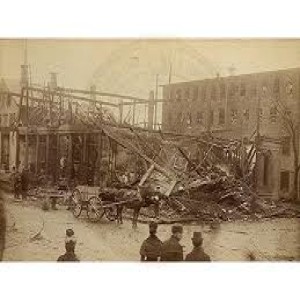

On this day in labor history, the year was 1905.
That was the day a boiler explosion destroyed the R.B. Grover Shoe Factory in Brockton, Massachusetts.
The boiler exploded as workers arrived for the day shift.
58 workers were killed and another 150 were injured.
The boiler reportedly shot up through all three floors, and the roof of the building.
The floors collapsed and walls caved in.
Those who survived the initial explosion were fatally trapped by debris and machinery.
Fires spread rapidly throughout the plant, ignited by broken gas lines and industrial solvents.
The entire block, including nearby homes and businesses were leveled to the ground.
Many of the dead were never positively identified.
The leatherworkers union provided financial assistance.
So did civic leaders and R.B Grover, who was ruined financially by the disaster.
Boiler inspectors concluded the explosion was caused by a manufacturing defect that was virtually impossible to detect.
The courts held no one liable.
By 1890 over 100,000 boilers providing steam heat were in use.
Over 2000 had exploded during the 1880s alone.
The American Society of Mechanical Engineers had been in existence for some 25 years by the time the boiler exploded at Grover.
They had released some guidelines.
But it was clear that inspections were rare and standards were needed.
The public outcry only grew in Massachusetts after another industrial boiler explosion occurred the next year.
The state passed measures establishing rules of operation.
By 1914, the American Society of Mechanical Engineers had successfully pushed back against manufacturers and railroad managers who opposed boiler regulations.
They published the first edition of the National Boiler and Pressure Vessel Code.
A national board of inspectors soon followed.
Since then, regulations ensuring safe operation and maintenance have saved countless lives.
More Episodes
All Episodes>>You may also like
Create Your Podcast In Minutes
- Full-featured podcast site
- Unlimited storage and bandwidth
- Comprehensive podcast stats
- Distribute to Apple Podcasts, Spotify, and more
- Make money with your podcast











